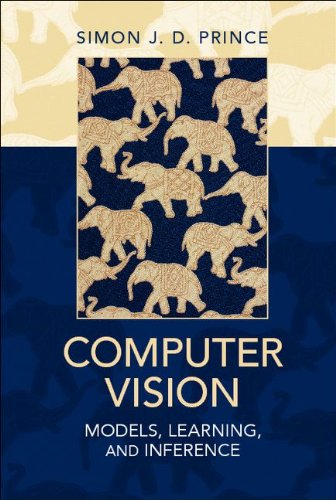
Computer Vision: Models, Learning, and Inference
by Simon J.D. Prince
Publisher: Cambridge University Press 2012
ISBN/ASIN: 1107011795
ISBN-13: 9781107011793
Number of pages: 665
Description:
This modern treatment of computer vision focuses on learning and inference in probabilistic models as a unifying theme. It shows how to use training data to learn the relationships between the observed image data and the aspects of the world that we wish to estimate, such as the 3D structure or the object class, and how to exploit these relationships to make new inferences about the world from new image data.
Download or read it online for free here:
Download link
(105MB, PDF)
Similar books
 Visual Reconstruction
Visual Reconstructionby Andrew Blake, Andrew Zisserman - The MIT Press
Visual Reconstruction presents a unified and highly original approach to the treatment of continuity in vision. The book introduces two new concepts: the weak continuity constraint and the graduated nonconvexity algorithm.
(11828 views)
 Anisotropic Diffusion in Image Processing
Anisotropic Diffusion in Image Processingby Joachim Weickert - Teubner
Many recent techniques for digital image enhancement and multiscale image representations are based on nonlinear PDEs. This book gives an introduction to the main ideas behind these methods, and it describes in a systematic way their foundations.
(13363 views)
 Programming Computer Vision with Python
Programming Computer Vision with Pythonby Jan Erik Solem - O'Reilly Media
The idea behind this book is to give an easily accessible entry point to hands-on computer vision with enough understanding of the underlying theory and algorithms to be a foundation for students, researchers and enthusiasts.
(25023 views)
 Machine Interpretation of Line Drawings
Machine Interpretation of Line Drawingsby Kokichi Sugihara - The MIT Press
The book on computer vision which solves the problem of the interpretation of line drawings and answers many other questions regarding the errors in the placement of lines in the images. Sugihara presents a mechanism that mimics human perception.
(15865 views)